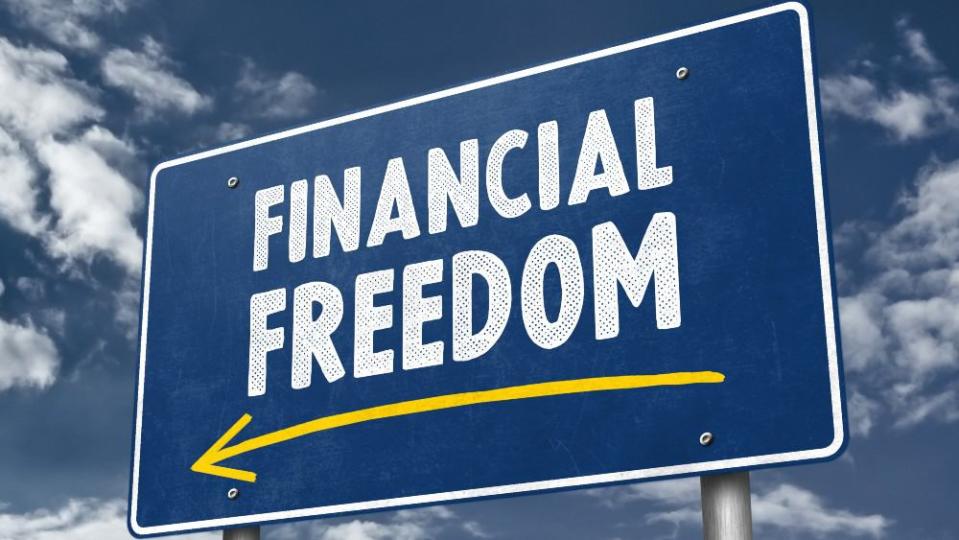Early Retirement: Strategies for Financial Independence by 50

Written by Amy Legate-Wolfe at The Motley Fool Canada
So you want to retire early. That can seem near impossible in the current market. After all, we’ve been through high volatility and then some. And despite trading near all-time highs, the TSX today continues to flounder and remain around the 22,000 point level.
With that in mind, how can investors in Canada reach their early retirement goals? Today, we’ll go over some strategies, and where to invest to make more.
Maximize
When it comes to early retirement, you’ll need to invest. So that means maximizing your contributions to both the Registered Retirement Savings Plan (RRSP) and Tax-Free Savings Account (TFSA). Contribute the maximum amount allowed to your RRSP to benefit from tax-deferred growth. This can reduce your taxable income now and allow investments to grow tax-free until withdrawal. Max out your TFSA contributions for tax-free growth and withdrawals. This is especially beneficial for long-term growth without worrying about future tax implications.
From there, set up automatic transfers to your savings and investment accounts to ensure consistent contributions and reduce the temptation to spend. As well, focus on paying off high-interest debt first, such as credit card debt. Then, tackle other debts like student loans, car loans, and mortgages. Reducing debt will free up more money for savings and investments.
Then, diversify your investments across different asset classes (stocks, bonds, real estate, etc.) to balance risk and return. Consider low-cost index funds and exchange-traded funds (ETF) to minimize fees and maximize growth.
Explore more
There are other lesser-known ways to reach early retirement. For instance, if available, maximize contributions to employer-sponsored pension plans. Some plans may offer matching contributions, effectively giving you free money towards retirement.
Consider relocating to areas with a lower cost of living, either within Canada or abroad. This strategy allows your money to stretch further, making early retirement more feasible. This would also mean embracing minimalism, so consider downsizing your home or lifestyle. Reducing expenses on housing, transportation, and discretionary spending can significantly boost your savings rate.
Investors can also plan for tax efficiency by splitting income with your spouse, using spousal RRSPs, and taking advantage of various tax credits and deductions. This can reduce your overall tax burden and increase your net savings. Now, where should you invest?
Start DRIPping
Once you have your accounts in order, consider generating passive income through a dividend reinvestment plan (DRIP). Invest in assets that generate passive income, such as rental properties, dividend-paying stocks, or peer-to-peer lending. This income can supplement your savings and help cover living expenses in retirement. Furthermore, enroll in DRIPs to automatically reinvest dividends from your investments, compounding your returns over time without additional transaction costs.
In fact, you can do this automatically through an ETF like the Vanguard FTSE Global All Cap ex Canada Index ETF (TSX:VXC). This ETF tracks the performance of the FTSE Global All Cap ex Canada Index, providing exposure to global equities outside of Canada.
The ETF diversifies investments internationally, reducing reliance on the Canadian market and spreading risk across global markets. It also offers a DRIP, whereby any dividends paid by the ETF are automatically reinvested in additional shares of the ETF, rather than being paid out in cash. This can be a useful feature for investors looking to compound their returns over time. Altogether, it’s one of the best ways to get in on growth and dividends to increase your likelihood of early retirement.
The post Early Retirement: Strategies for Financial Independence by 50 appeared first on The Motley Fool Canada.
What Stocks Should You Add to Your Retirement Portfolio?
The Motley Fool Stock Advisor Canada analyst team just identified what they believe are the 10 best stocks for investors to buy now. The 10 stocks that made the cut could produce monster returns in the coming years, potentially setting you up for a more prosperous retirement.
Consider when "the eBay of Latin America," MercadoLibre, made this list on January 8, 2014 ... if you invested $1,000 at the time of our recommendation, you’d have $18,111.92.*
Stock Advisor Canada provides investors with an easy-to-follow blueprint for success, including guidance on building a portfolio, regular updates from analysts, and two new stock picks each month – one from Canada and one from the U.S. The Stock Advisor Canada service has outperformed the return of S&P/TSX Composite Index by 27 percentage points since 2013*.
See the 10 stocks * Returns as of 5/22/24
More reading
Can You Guess the 10 Most Popular Canadian Stocks? (If You Own Them, You Might Be Losing Out.)
How to Build a Bulletproof Monthly Passive-Income Portfolio in 2024 With Just $25,000
Fool contributor Amy Legate-Wolfe has positions in Vanguard FTSE Global All Cap Ex Canada Index ETF. The Motley Fool has no position in any of the stocks mentioned. The Motley Fool has a disclosure policy.
2024

 Yahoo Finance
Yahoo Finance 